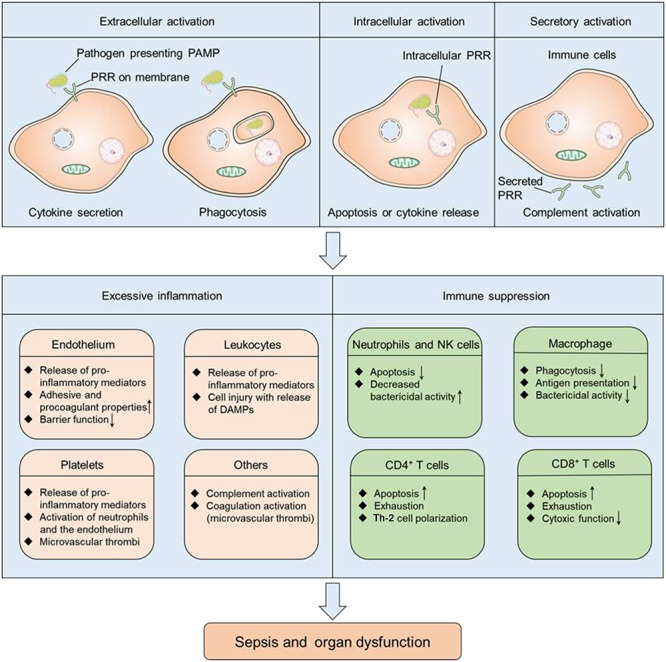Figure 4.

The host response to infection and during sepsis. After infection, PAMPs are released and interact with cell-surface, intracellular and even secreted PRRs, including toll-like receptors, nucleotide-binding oligomerization domain-like receptors, retinoic acid-inducible gene-like receptors and C-type lectin receptors. The interaction between PAMPs and PRRs can result in cytokine secretion, immune cell apoptosis and the activation of the complement system. In some burn patients, these events lead to the simultaneous imbalanced activation of proinflammatory response (excessive inflammation) and anti-inflammatory response (immune suppression). Excessive inflammation can result in the dysfunction of the endothelial barrier, microvascular thrombi and further injuries. Immunosuppression causes decreased bactericidal activity of neutrophils and NK cells, decreased phagocytosis and antigen presentation of macrophages and impaired innate immune system response. Taken together, excessive inflammation and immunosuppression contribute to a greatly increased risk for sepsis and organ dysfunction. PAMPs pathogen-associated molecular pattern molecules, PRR pattern recognition receptors, DAMPs damage-associated molecular patterns, NK natural killer, Th-2 helper T lymphocyte 2
